TechRadar Verdict
The Bluetti AC240 is a a powerful portable power station for those on the go - however, we do note there's some room for improvement. The unit boasts a 1536Wh capacity and a high 2400W, and loads of ports for charging devices. However, it's heavy, better suited to stationary use, relies on certain proprietary cables, and one port can't be used without a parallel kit box that isn't even widely available. Like we said, powerful, but with room to improve.
Pros
- +
Medium 1536Wh capacity with expansion
- +
Very high output of 2400W
- +
Plenty of ports, plugs, sockets
- +
Quiet operation
- +
UPS mode and sine wave output
- +
Possibility to charge from several different sources
- +
Simultaneous AC, DC and USB output
Cons
- -
Heavier and bulkier than expected
- -
More Propriety AC and DC input cables
- -
Another app
- -
Not compatible with own brand microinverter
- -
An additional port cannot be used due to non-available P480A parallel kit box
Why you can trust TechRadar
Having previously reviewed the Bluetti AC200L, I got to grips with another, the AC240 to see if the portable power station is any different or better.
Like the AC200L (you can read more in our Bluetti AC200L power station review), the AC240 came in a large plain looking cardboard box with wrap-around plastic straps and additional cardboard edge protectors. And like before there was another cardboard box inside. Again, to honor the warranty you must keep the inner box.
But how does the unit itself compare to the best portable power stations we've reviewed? We put the Bluetti AC240 to the test.
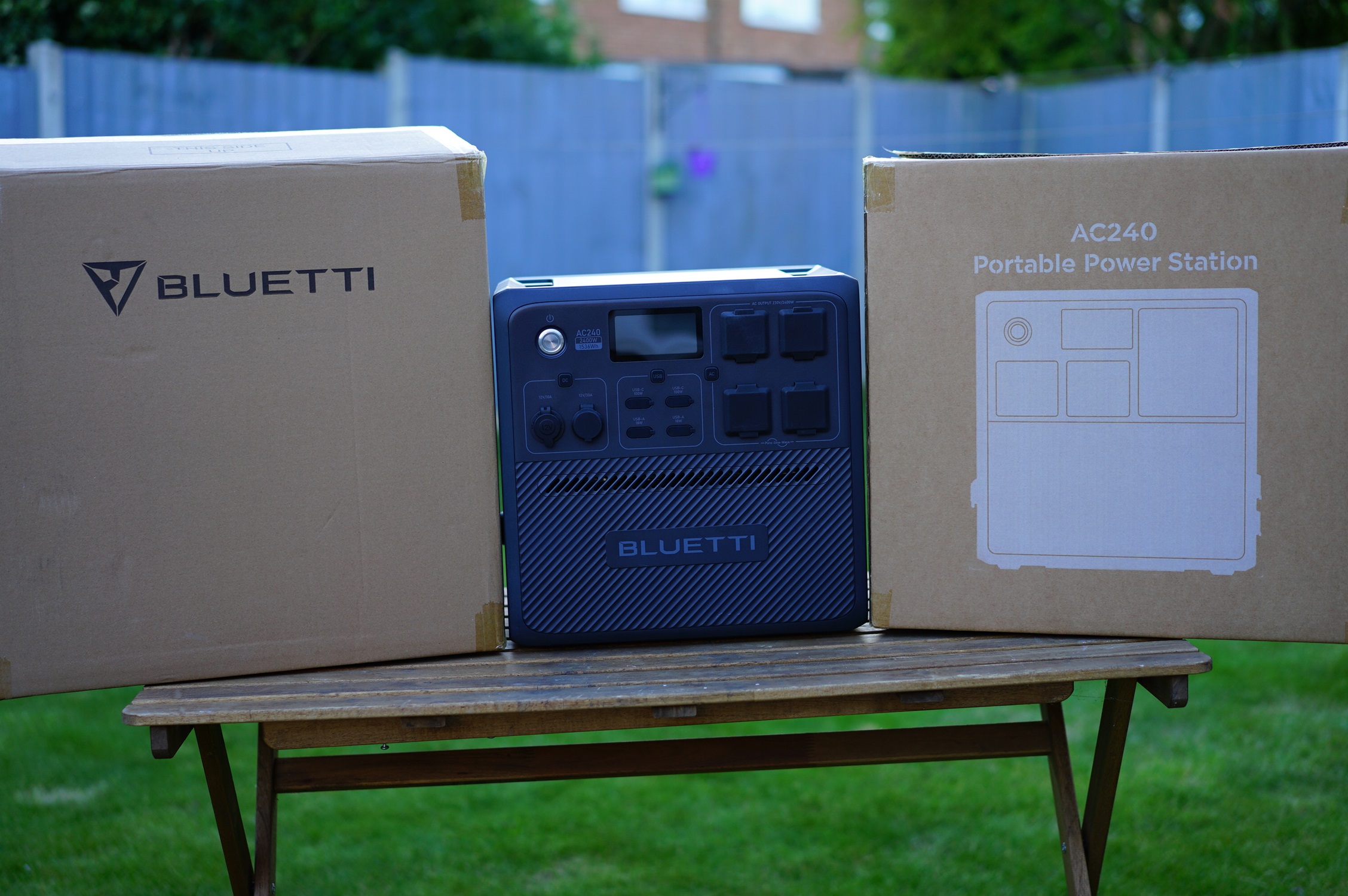
Bluetti AC240: Packaging
Opening the main box revealed the documentation and small sack of accessory wires.
The Bluetti AC240 itself was wrapped in a plastic sheath and sandwiched between two large polystyrene bumpers, top and bottom.
What’s included?
Once out I was able to take stock of what was provided other than the Bluetti AC240 and documentation. In the small sack was:
- An AC power cord with UK plug to charge the Bluetti AC240
- A 12v car cigarette plug to Proprietary connector
- MC4 connectors to Proprietary connector
- A small grounding screw
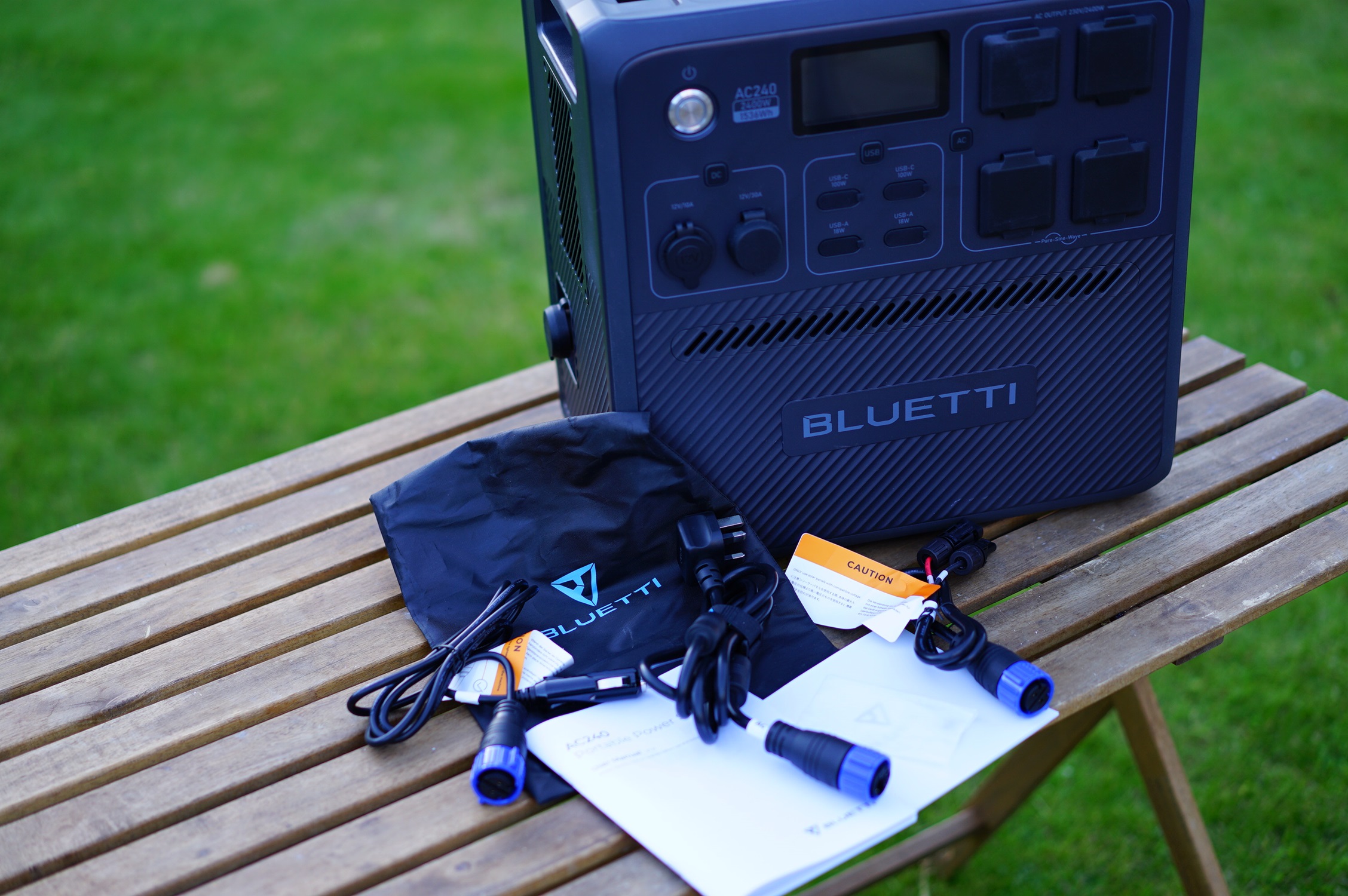
Bluetti AC240: Fit & feel
The Bluetti AC240 came with a 55% rate which is normal for its LiFePO4 chemistry for storage and transport.
The Bluetti AC240 weighs in at around 33kgs, it is made of a dark grey plastic material with a pretty stripey like texture all around, it comes with large rubberised feet to allow it to feel planted on any relatively flat surface.
Part of its design (and it does need it) are two very large carry handles on either side to ease with transportation.
The front and left side are the main working parts of the battery that consumers would interact with various sockets and ports for charging and using.
I last reviewed the AC200L and noted that it was heavy and large, and the AC240 ups this by being even heavier and bigger. The unit is 40cm tall by 40cm wide and 28cm deep. Despite the additional size and weight, it has less battery capacity than the AC200L.
At the front is the following:
4 x UK sockets providing 230v with a total combined sustained output of 2400w
2 x USB-C both capable of outputting 100w each
2 x USB-A 18W max each
1 x 12v (max 10A) car charger port
1 x 12v (max 30A) RV port with a 360W max output
Power on/off button and;
Lastly, the large information LCD display screen

On the rights side are the following ports
AC input (proprietary socket)
DC Input (proprietary socket)
AC Parallel Port (more on this)
Also on this side are the circuit breaker and a grounding pole

On the left is a Battery expansion port. All sockets have captive rubber gaskets over them and the Bluetti AC240 itself does have an apparent IP rating of IP65.
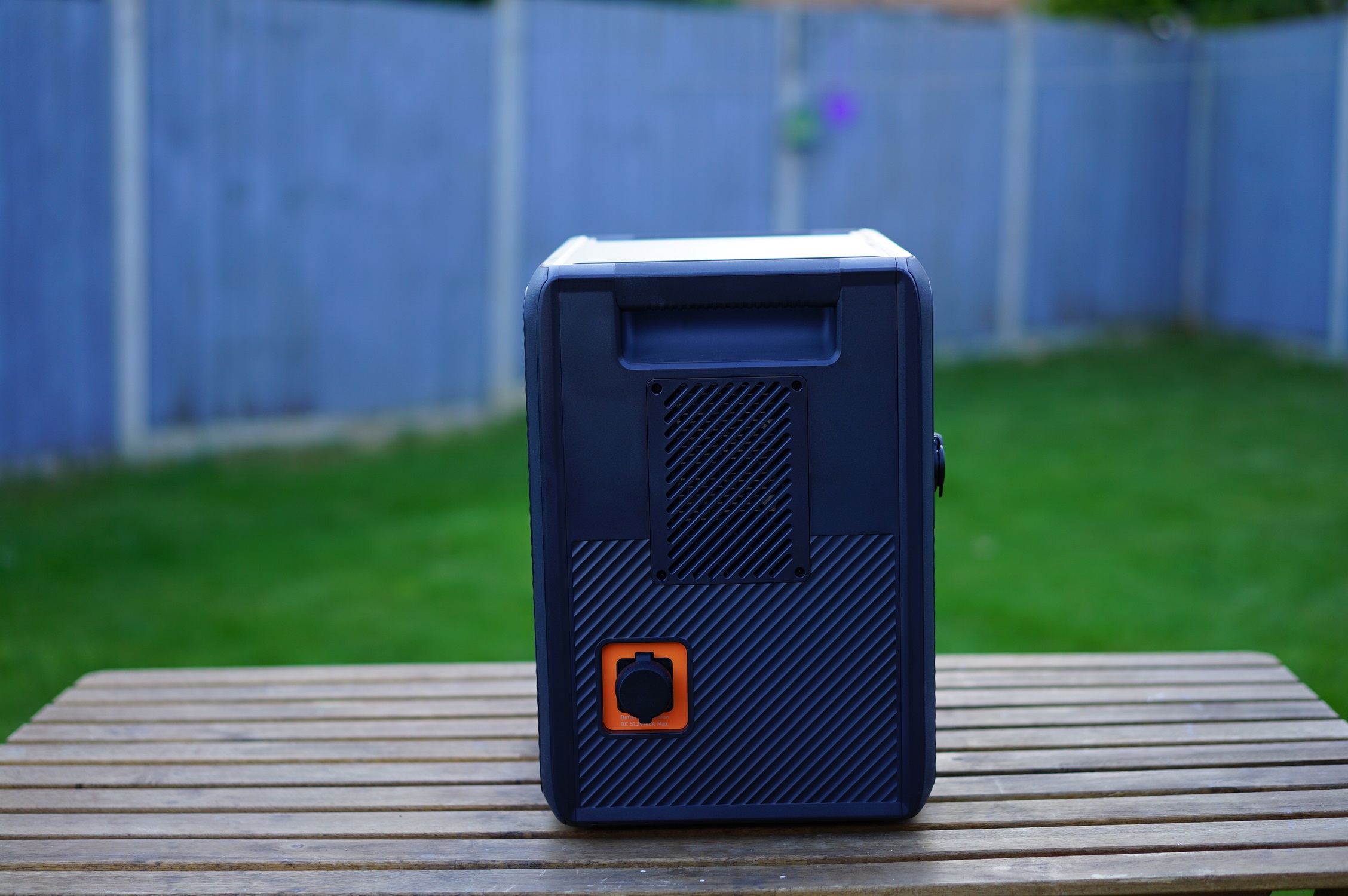
Bluetti AC240: In use
Having taken receipt of the Bluetti AC240, I charged it to 100% and like the previously reviewed Bluetti AC200L, the AC and DC charging ports are proprietary sockets. However, a slight improvement on the design of the AC200L as they use connectors from JNICON.

Previously the AC200L had a design where it was difficult to get the orientation correct when plugging either the AC or DC cables then screwing them in. On the AC240 JNICON cables, each cable has an arrow on the top of the connector, you just push the connector into the socket until it clicks and that’s it. To remove it you twist the blue collar and pull out. A vast improvement over the AC200L.

Furthermore, unlike the AC200L where in order to connect a solar or a car charger, you had to use a short XT90 to screw connector cable. The AC240 has done away with that, instead you get a cable for solar with MC4 connectors and one for car charging both terminated with the JNICON connector.
Again, I found Bluetti’s decision to use proprietary plugs and sockets for the AC and DC charging on the AC200L and AC240 an oversight. If you were to lose any cables then you would have to source them directly from Bluetti. I looked up the AC power cable for the AC240 on Bluetti’s UK website and one isn’t available for separate purchase should you lose or damage the only one you have. However similar cables terminated with JNICON ones appeared to be more expensive.
As previously mentioned, using a common IEC C14 connector and XT90 for DC would have been better as these are recognised and easily obtainable connectors though I suspect the JNICON ones were chosen to maintain the IP rating.
I found charging the AC240 via mains to be relatively quick and easy, plug it in, switch it on, and away you go. The Bluetti AC240 can be charged from multiple sources and even allows through charging where it can provide power to a device whilst itself is charging. Of course, it can be charged from the grid using the provided AC charging cable, it can be charged via DC using the provided cables that terminate with MC4 connectors or the car charger. Alternatively, it can also be charged from a car battery with a separately available cable with crocodile clips.
Using it on high-draw products such as irons, air fryers, an induction hob worked well as it has the capability to output over 2400W of AC energy. However, the smaller capacity of 1536Wh of the battery means that it does last as long as previously reviewed models.
I noted a significant improvement Bluetti made on the AC240 over the AC200L: the AC plug sockets. Previously the AC200L had an issue where some of the AC plugs were rendered useless because of the rubber gaskets fouling the plug cable. Not so for the AC240.
The upper AC sockets have been rotated 180 degrees so that the plugs are essentially upside down and the gaskets for those plugs have been placed below too, this means that now all plugs are separated away from each other and the gaskets do not foul the sockets or plug cables anymore.
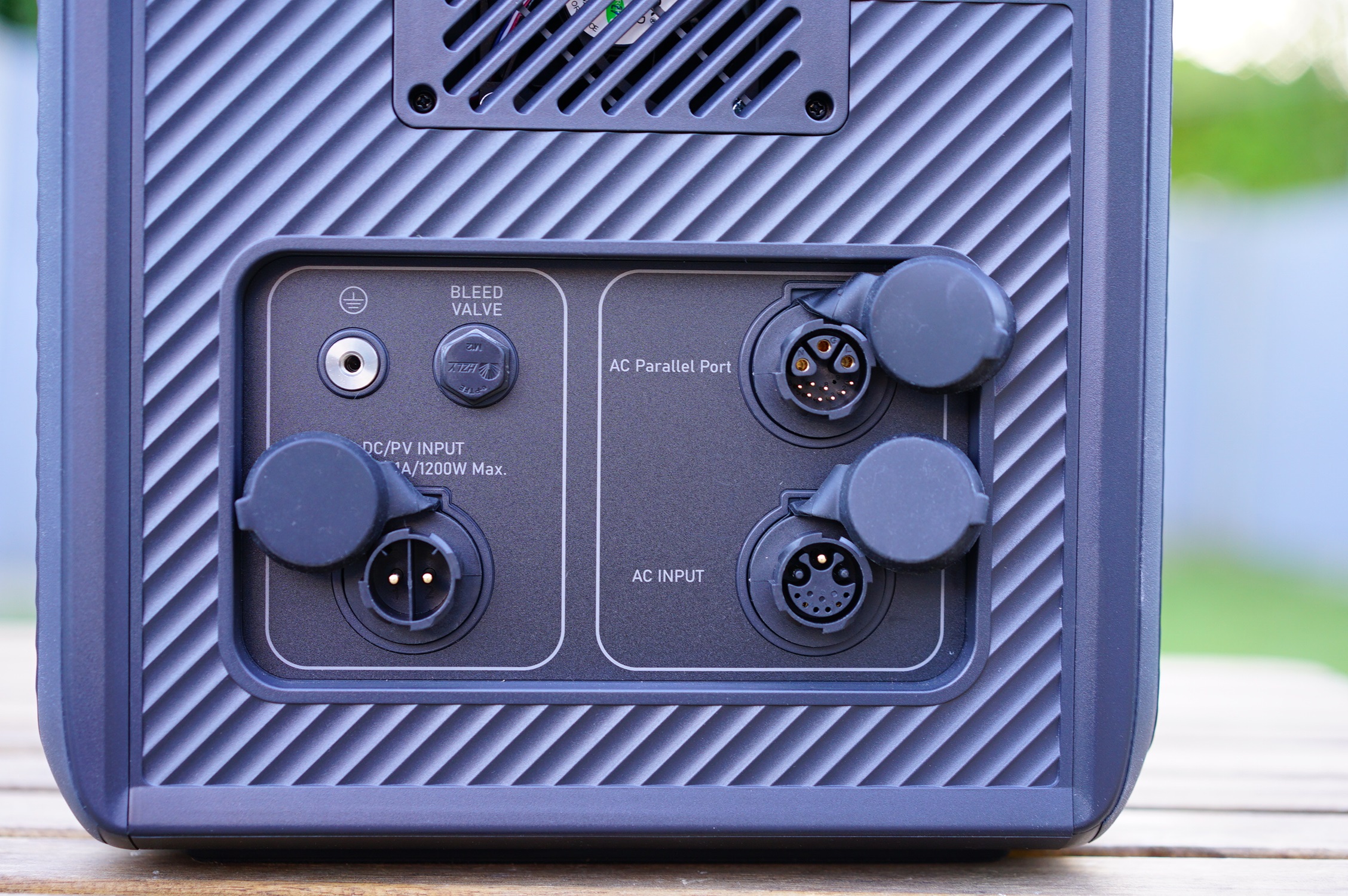
There is a large LCD display, useful for monitoring live energy input/output from AC or DC sources/outputs, the screen displays percentage of battery remaining, roughly in time how much is left depending on the discharge as well as what the battery is dis/charging at and where.
There is an app available for the battery allowing you to monitor DC in/out, AC in /out and various other features to configure. The AC240 has a Bluetooth connection for local use and even Wi-Fi for remote use. Some will like the app functionality; others won't and frankly it's just another app in the catalogue of apps on most phones.
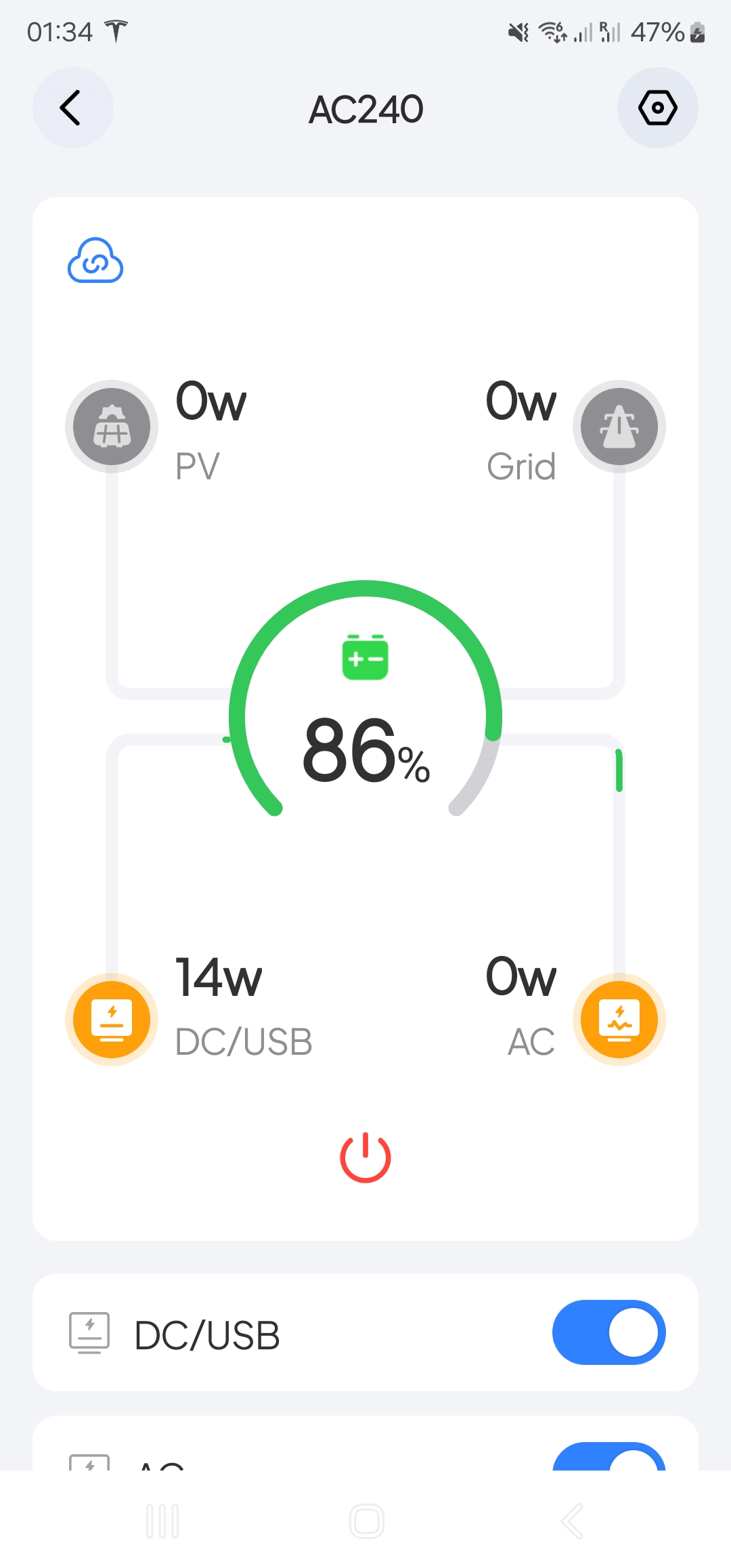
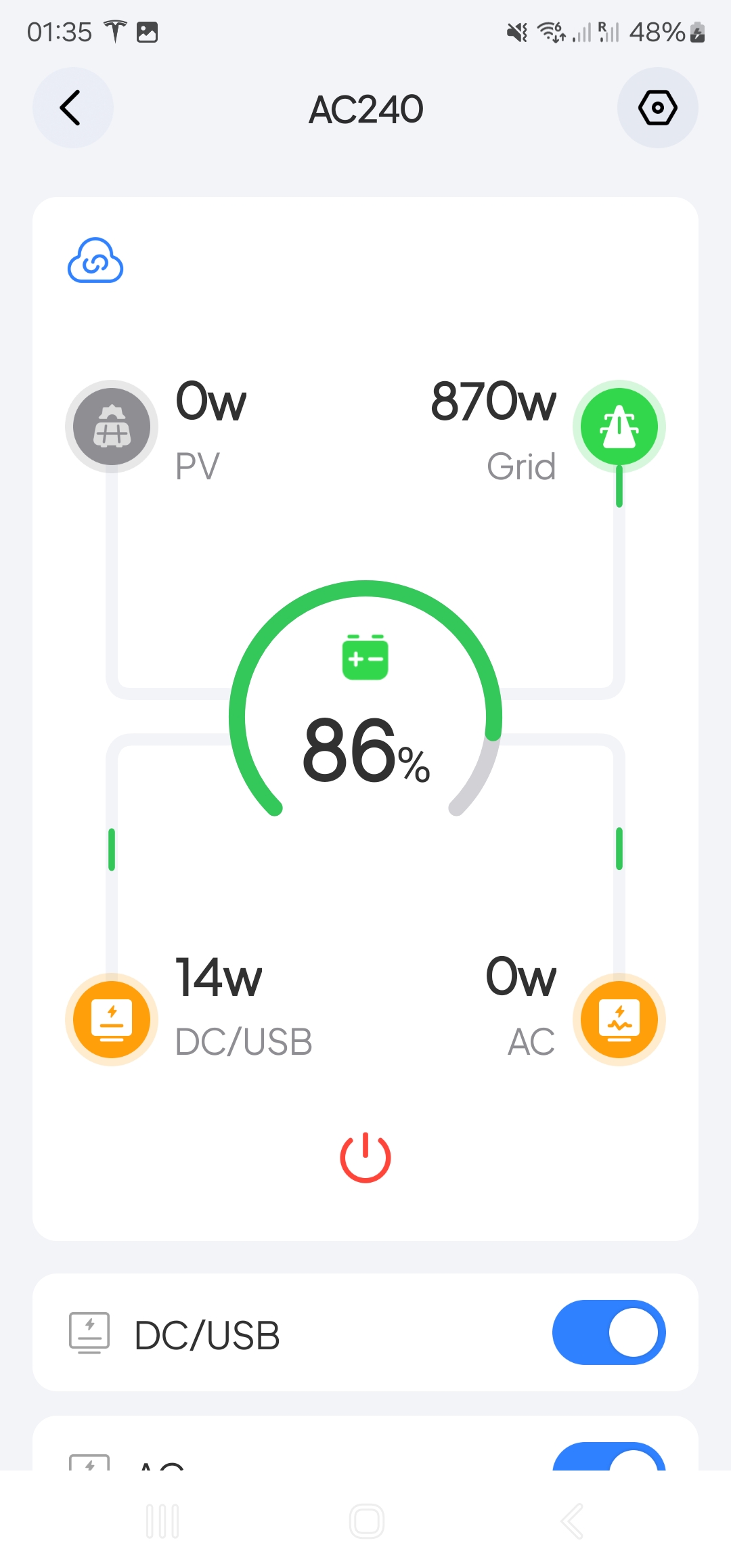
A useful feature is that this battery can be used as a UPS providing power to equipment in the event of a grid power loss with near instant switchover and true sine wave output as some equipment is sensitive to stepped wave inputs.
Also of note is a battery expansion port which can be used to extend the capacity of the AC240, there are separately available Bluetti B210 expansion batteries. Sadly, whilst the AC240 does have the expansion port which can have current flowing both ways for dis/charge, it cannot be used as part of an excess Solar store system for a residential home, despite Bluetti having a Solar micro inverter and battery charger (the A80 and D100S respectively), these are not compatible with the AC240.
A shame really, and possibly a missed opportunity. Competitor products such as the EcoFlow PowerStream allows you use most of their battery line ups to do just this.
With regards to its combined 2400W output, according to the documentation it can actually (albeit briefly) output 3600W and a “power lifting” mode for use on high resistive loads such as kettles, this must be set manually using the buttons and is not on by default.
There is a possibility to get the AC240 to output over to 4800W, but this requires you to own another AC240 and a yet to be available Parallel Kit Box. You may remember a previously mentioned AC parallel port in the list of connections.
This port allows you to connect two AC240s together via a parallel kit box (the P480A) combining an AC output of 4800w. As of yet there is no mention of one for the UK market at this time.
All in all I believe the AC240 is aimed at a different group or user than the AC200L, both at the outdoor/camping lifestyle yet the AC240 is made to more stationary in a caravan or RV than the AC200L which is taken on such trips and the moved from vehicle to campsite. That said, for the size and heft of the AC240, I do wonder what they have (or haven’t done) with the additional space in the case.

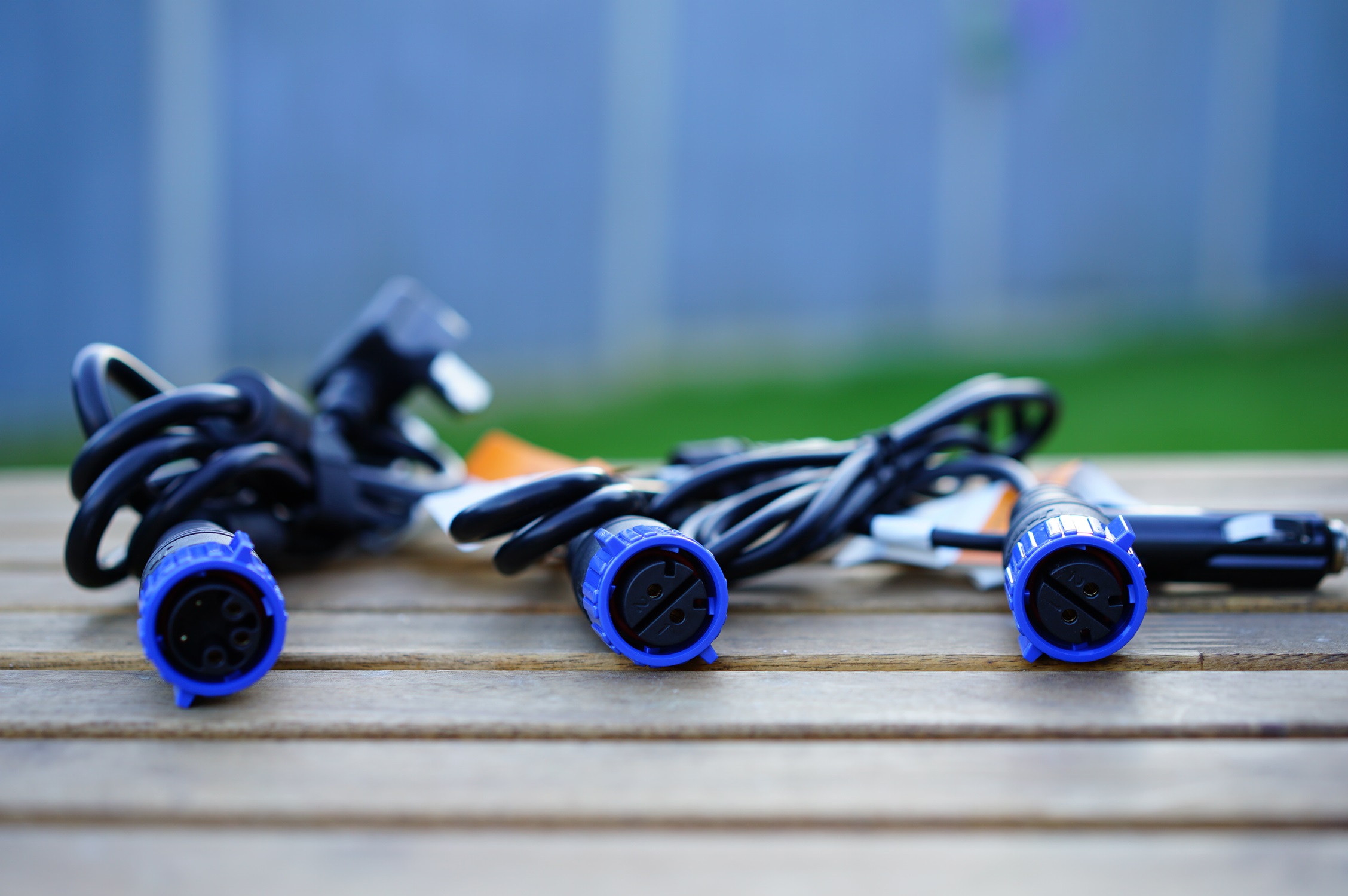
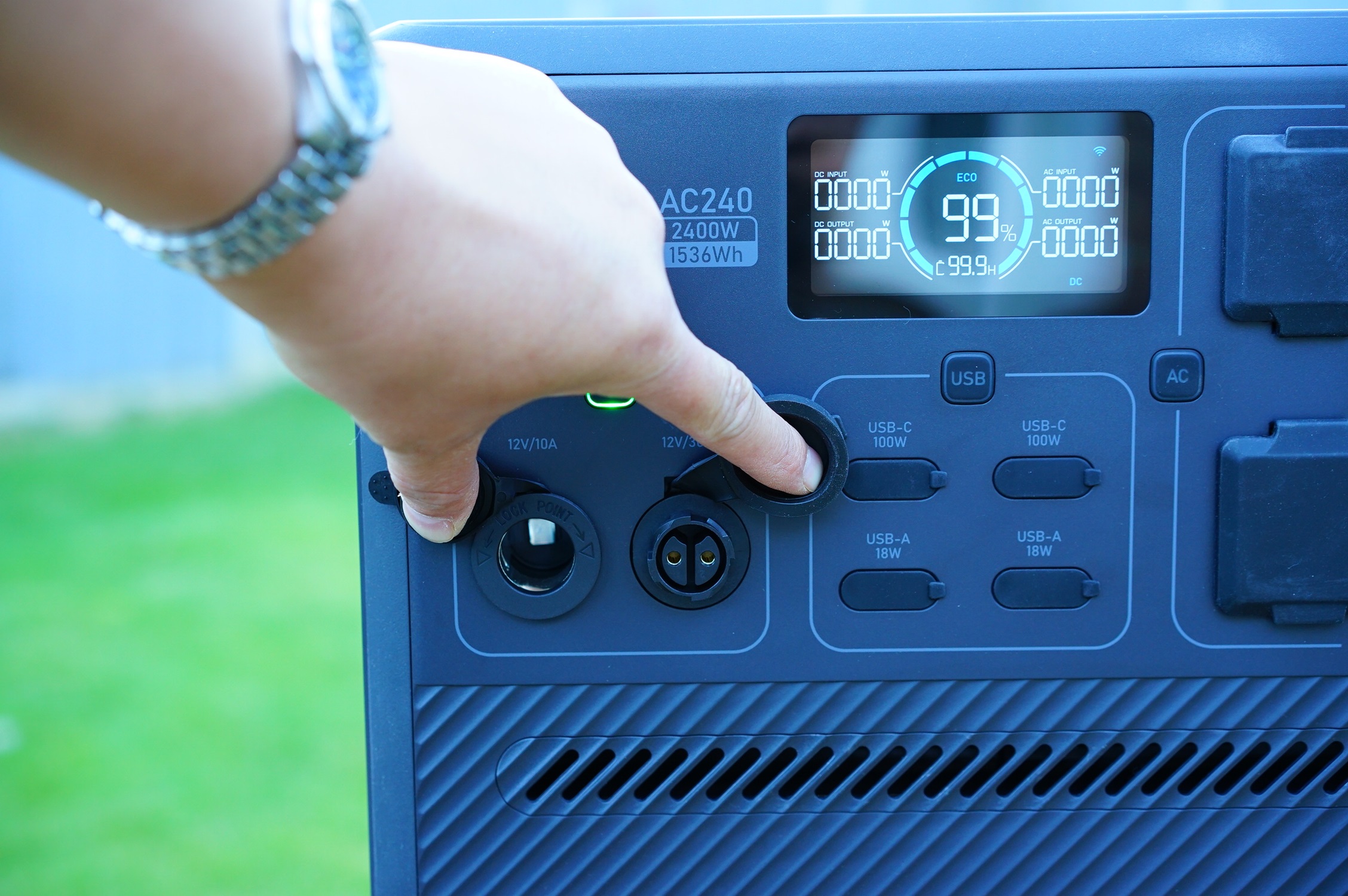

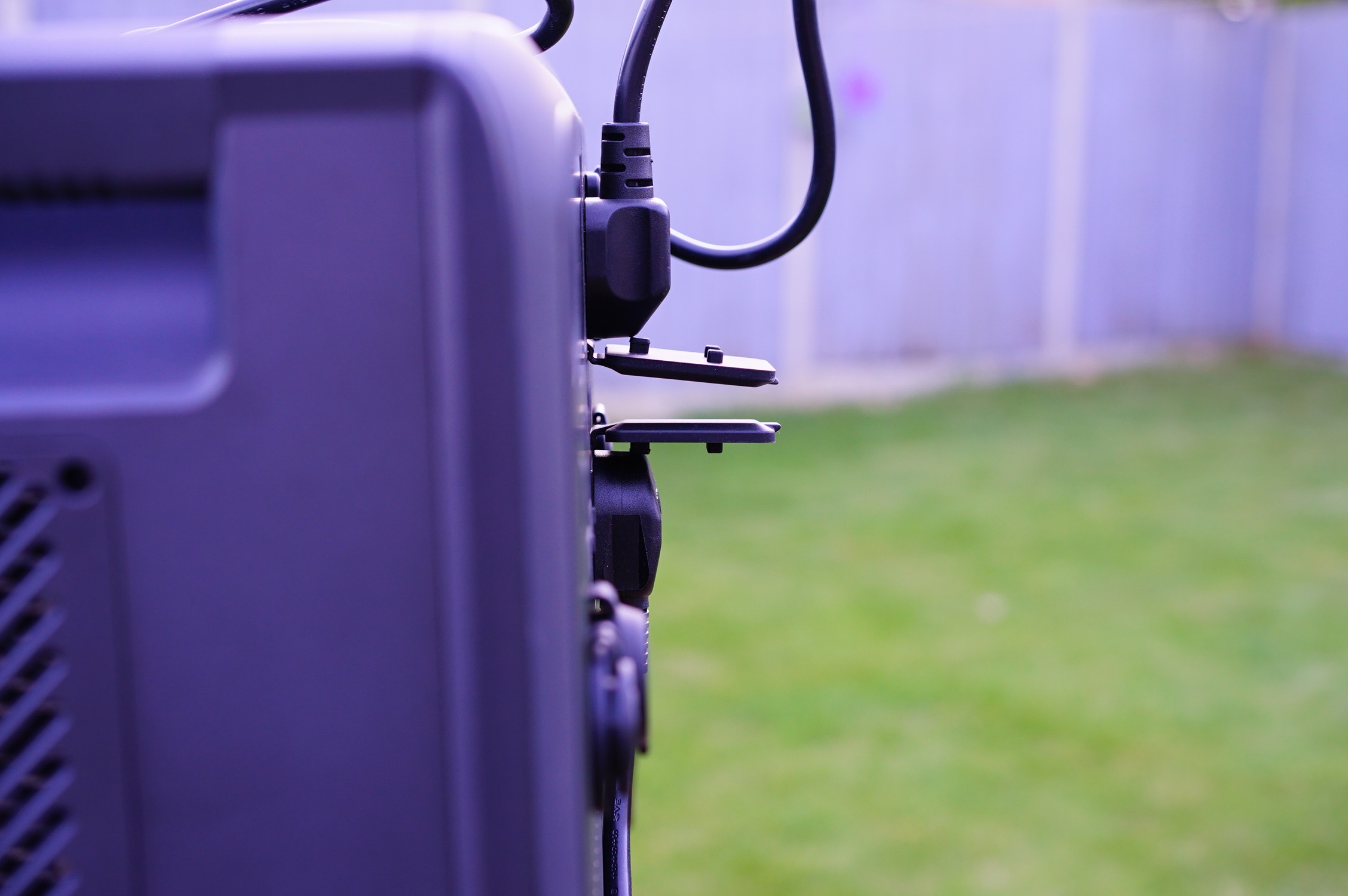
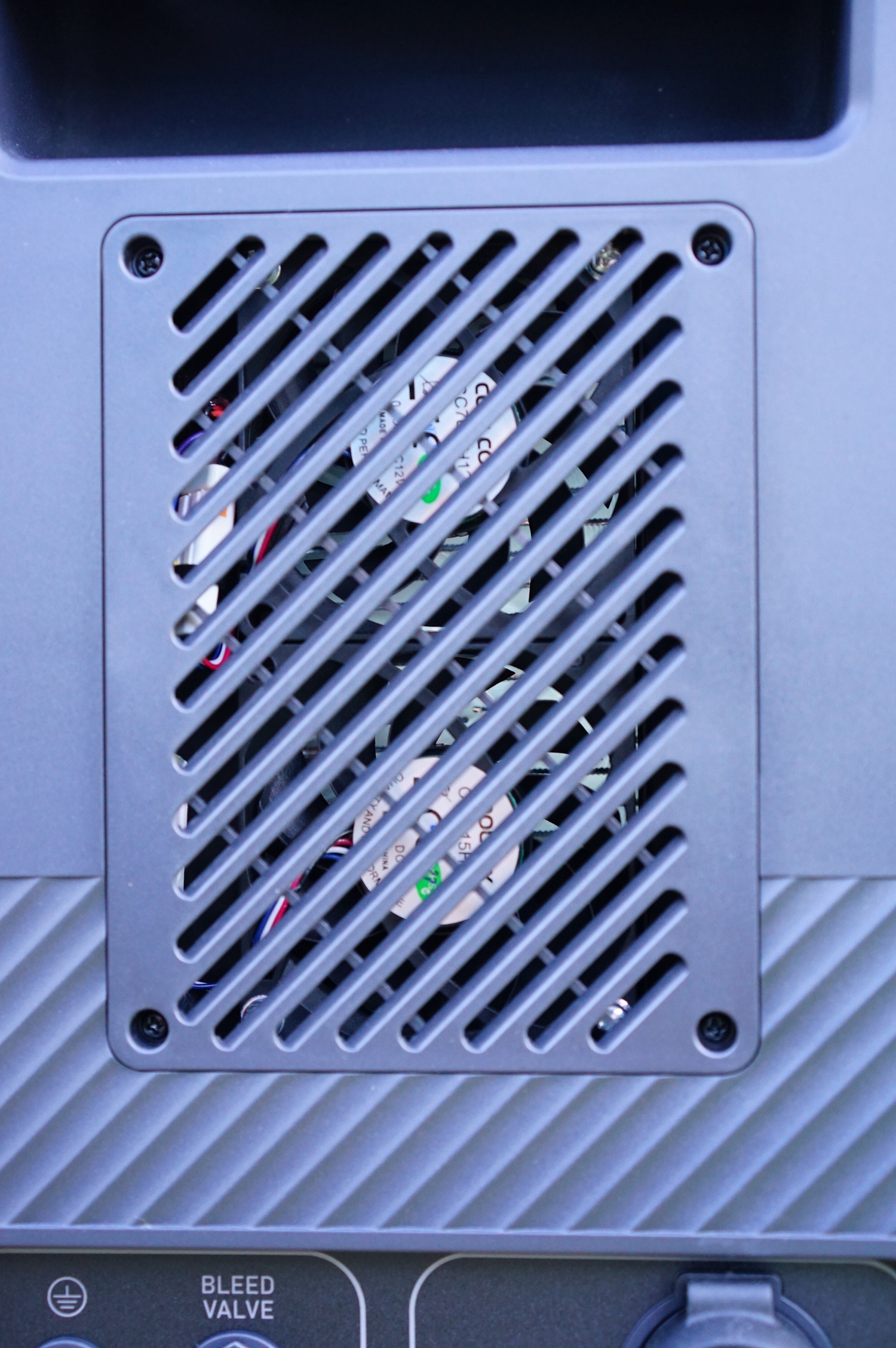

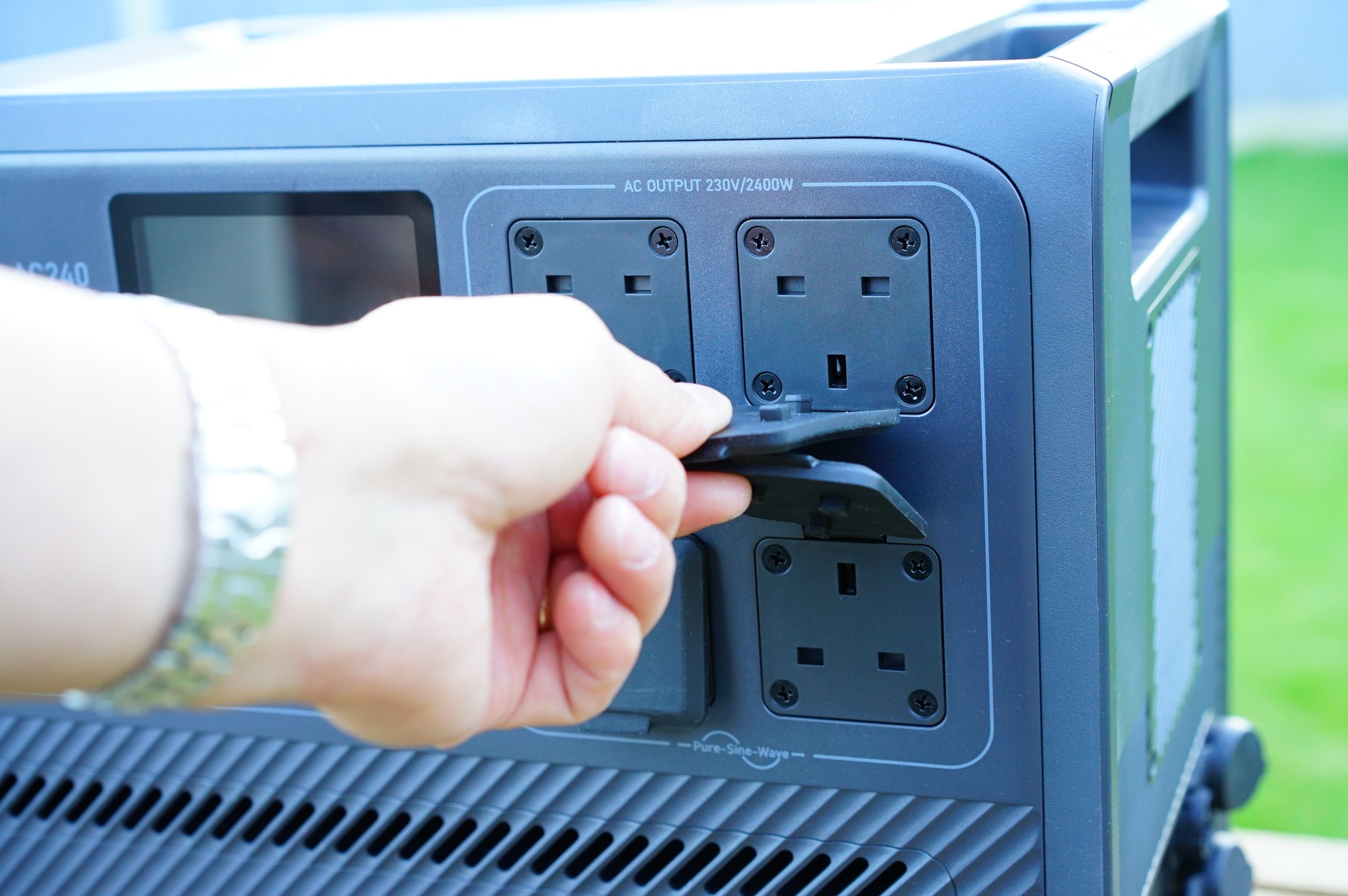


Should I buy the Bluetti AC240?
Buy it if...
You want a stationary power station
Compared to the AC200L, this power solution better serves in a stationary position, we feel - perfect for setting up in an RV or caravan.
Your capacity needs are modest
At 1536Wh, this is a medium capacity power station, although this can be expanded if you require more power.
Don't buy it...
You need a truly portable power station
The Bluetti AC24 is a large, heavy unit - more so than the higher capacity AC200L - which means it's not ideal for transporting regularly.
You hate proprietary cables
Once again, Bluetti bundles its power station with proprietary cables to charge the unit. If you lose the cable, you'll need to buy replacements direct from the company.

Désiré has been musing and writing about technology during a career spanning four decades. He dabbled in website builders and web hosting when DHTML and frames were in vogue and started narrating about the impact of technology on society just before the start of the Y2K hysteria at the turn of the last millennium.
